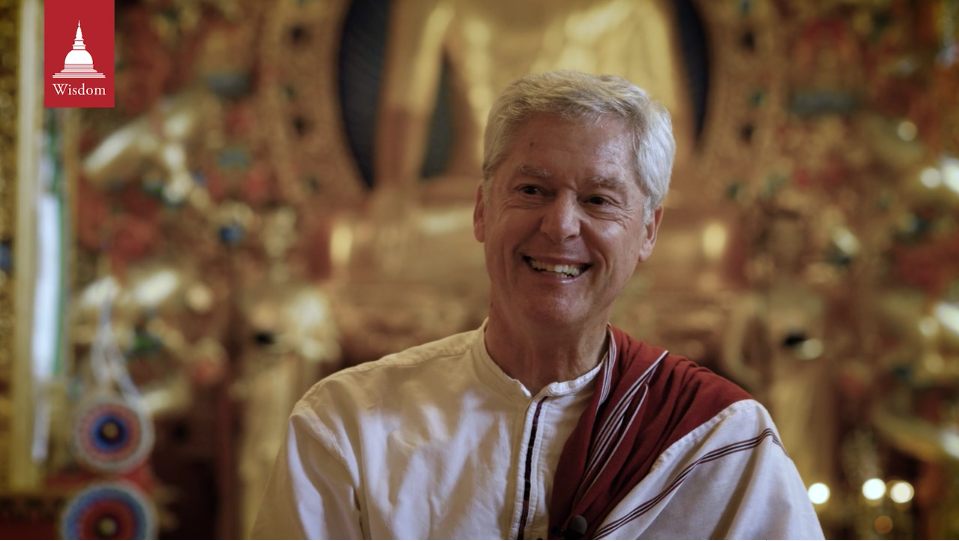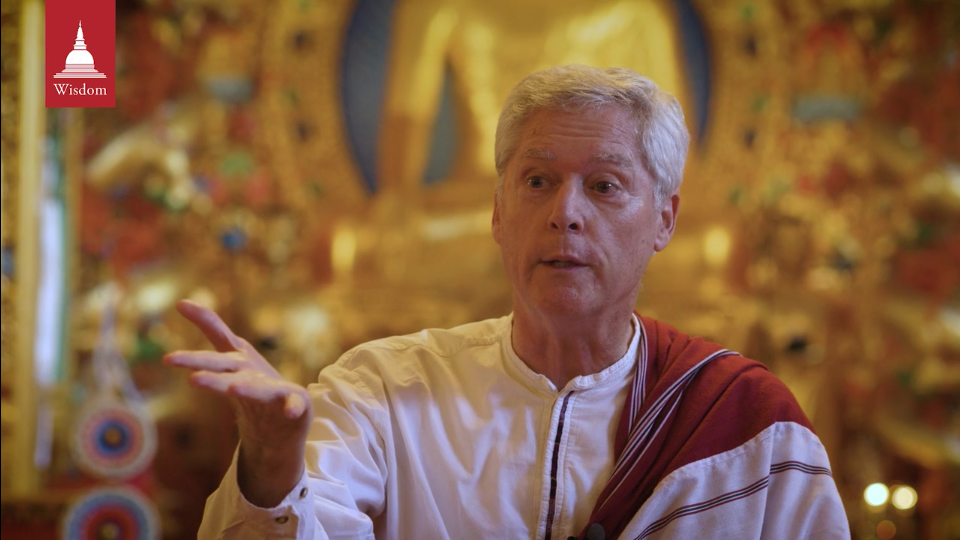Each time we begin a session you hear the chime ring. Let this be a catalyst for you to set your mind at ease by allowing your awareness to descend, of a sense of its descending down into the body, down into your torso. If you’re sitting on a chair down to the buttocks, down to the feet, in touch with the floor. If you’re sitting cross-legged, down to the legs, down to contact of your body with your meditation cushion. Descend into this non-conceptual, this silent field of tactile sensations.
Let your awareness rest in a witnessing mode that is not cogitating, not imagining or visualizing, but in a mode approximating bare attention. From moment to moment simply be aware of the tactile sensations of your body in contact with the chair, the cushion, the floor.
These tactile sensations of contact correspond to the earth element. These sensations of firmness and solidity ground your awareness in the sensations of the earth element.
Then like a fragrance filling a room, let your awareness fill the space of your body from the soles of your feet, through your legs, your torso, your arms, up to top of the head. Let your awareness permeate this entire somatic field, being mindfully present throughout the entire body.
Again, there’s no need to visualize the body or to think about the body. Simply be aware from moment to moment of the tactile sensations arising throughout the somatic field.
As you do so you may note that certain regions of the body feel tight or constricted. For many people they experience this in the shoulders, the base of the neck. If you identified areas of tightness, gently attend to, or focus your attention upon them as you breathe in. As you breathe out surrender your muscles to gravity. Relax. Release the muscles to the best of your ability with every out breath.
The face is a veritable magnet of tension. It expresses itself in many of our facial expressions. So bring your awareness quite deliberately to the muscles of the face. Soften the muscles around the mouth, and the jaws.
Let your forehead feel open and spacious.
Let there be an openness between the eyebrows, which often contract when we’re tense or anxious.
Soften the muscles around the eyes.
And soften the eyes themselves.
In this way settle your entire body in a posture of ease, of comfort, of relaxation. And as far as you are indeed comfortable you should find it quite easy for the short duration of this session to remain motionless apart from the movements of the breath.
If you’re sitting upright, let your spine be straight. Your sternum just slightly lifted as you sit at attention. Keep your abdominal muscles loose and relaxed. So that when you breathe in like filling a vase with water, which fills from the bottom up, the sensations of the breath low down to the abdomen, even the lower belly, expanding as you inhale.
In this way settle the body in its natural state. Relaxed, still and vigilant, a state of dynamic equilibrium.
Then sequentially we settle the speech into its natural state, which is resting in effortless silence like that of a guitar in which the strings are cut.
Easily done in terms of our public speech, our voice that others can hear. But what about the speech or the voice of the mind, the internal chit chat, the commentary, the rumination? What about the inner voice of the mind? Not so easy to rest in effortless silence inwardly.
To facilitate this inner silence, settle your respiration in its natural rhythm, which means to allow the respiration to flow in and out effortlessly without impeding the flow of the breath in any way.
The key is the out breath. A natural time to release, to relax, to let go.
With every out breath relax more and more deeply in the body surrendering your muscles to gravity, loosening up.
With every exhalation release the breath all the way through to the end without holding anything in reserve. This does not entail forcefully expelling the breath, but rather releasing it and releasing it, until there’s nothing more to release.
With every out breath whatever thoughts, or images, memories may have come to mind as you breathe out just release them like a gentle gust of breeze blowing away dry autumn leaves. Release these thoughts and images. Let them dissolve back into the space of the mind.
When you come to the very end of the out breath relax even more deeply. And without exerting any effort to pull the next breath in, just relax and allow the next breath to flow in as effortless as a wave washing up on shore.
Whether that in breath is deep or shallow, long or short, let it be. Don’t interfere with it try to regulate the breathing in any way. Let the body breathe. Without interference, breathe egolessly as if you were deep asleep.
To settle the respiration in this unnatural rhythm means to allow the body to breathe without interference. Taking in just what it needs, giving back just what it doesn’t need.
In this way gently breath by breath calm the inner turbulence of the mind that manifest in rumination in the obsessive, compulsive flow of thinking.
And finally we turn to the mind, to settle the mind in its natural state again and be with these three qualities of relaxation, stillness and vigilance.
In order to bring about a state of mental ease with the few remaining minutes of the session, to the best of your ability release all concerns, hopes, and fears about the future and the past. And allow yourself the leisure to come to rest in stillness in the present moment. Simply being present.
Release all outwardly directed desires and aversions, hopes, and fears. Allow your awareness to come to rest in stillness in the present moment.
In so far as the mind is free of grasping to hopes and fears, desires and aversions, stillness emerges naturally. And as stillness is bright and clear the very nature of awareness is to illuminate, to make manifest all appearances, thoughts, memories, and so on. So rest your awareness in this balance of ease, stillness, and clarity, mindfully present in the present moment without doing anything.
Maintaining the stillness of awareness let the light of your awareness or the field of your attention once again illuminate the space of the body. Be aware of the body, the entire tactile field.
Take specific note of these fluctuations within the somatic field corresponding to the in and out breath. The sensations correlated with respiration throughout the whole body. Feel your body breathe.
Let there be a corresponding rhythm in your attention. As the breath flows in, arouse, focus, concentrate your attention on these sensations of the respiration throughout the body.
As the breath flows out, deeply relax, again letting go of any vagrant thoughts or memories. Relax in body and mind with every out breath.
Above all, sustain the flow of knowing of cognizance, not just spacing out or falling into a trance-life state. Maintain an ongoing flow of clear discerning awareness.



